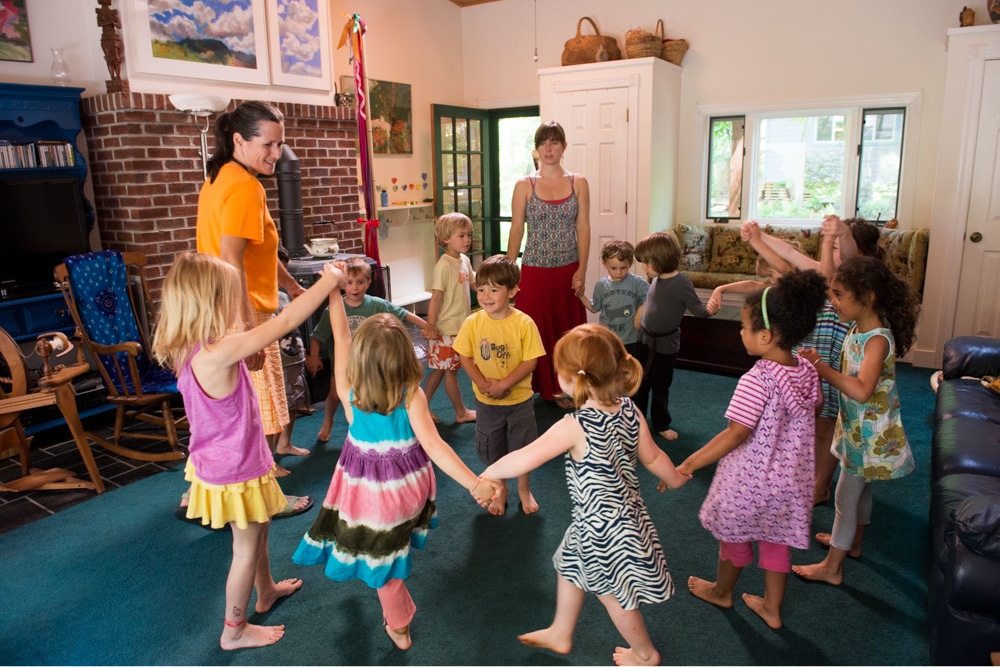 Thoughts about Circle Time with Older Children
Thoughts about Circle Time with Older Children
by Sharifa Oppenheimer
Sharifa shares from her extensive work with kinder-garten-aged children:
Circle Time has always been one of my favorite times of the day. What I love is that Circle Time incorporates many of the elements we strive to bring to young children throughout the day, all in one lovely and lively experience!
We all know how critical movement is for the young child’s balanced development. In Circle Time we can offer them large and small movements, forward and backward, expansion and contraction, all within the context of song and games. In a fall circle, they can reach high to pick apples, or bend low to dig potatoes. In winter they can go walking with a giant’s feet or tip-toe like a winter’s gnome. In spring they can huddle close like doves in the dove-cote and at dawn be released to fly into the blue morning, then be called back to sleep again.
They discover that rhythm originates within their own heartbeat, through the rhythm and rhyme of poetry and song. Gentle rhythmic movement engages the para-sympathetic nervous system, which brings bodily harmony, delight and joy. We can see this in their shining eyes and rosy cheeks. The part of the brain that processes song develops before the language center does, and song is found to be an underpinning of language acquisition. Through song the child moves easily and steadily into spoken language.
I find that the children’s visceral memory, their body memory, is amazing at this age! Five- and six-year-olds can sing and play their way through long Circle sequences with ease and pleasure. I wonder if this is because memory is associated with emotion in the brain, and their great enjoyment (as well as the movement itself) locks the learning in?
For the kindergarten-aged child, Circle Games like hunting among friends’ hands for a hidden Easter egg or playing drop the hankie, or being “it” hiding her eyes while one child is hidden under a large silk and then she observes and guesses who is missing…all these hone the budding mental capacities and are so much fun!
Perhaps most importantly is the way our children learn all this through imitation. They have the innate capacity to “slip inside our skins” and imitate from the inside out. As they imitate us, they learn by heart how to self-regulate. Amongst all this lively joy it would be easy for them to “spin out of control,” yet because we model for them the boundary between joy and wildness, they learn the capacity for balance: we can show them that joy is sustainable. In life they will learn that wild glee eventually brings sorrow, whereas balance is the royal road to well being.
Movement, rhythm, song, body memory, mental capacity, imitation, balance — during Circle Time all of these support our children in their body, heart, mind and spirit!
Sharifa Oppenheimer is a Waldorf early childhood teacher and author of Heaven on Earth: A Handbook for Parents of Young Children.
